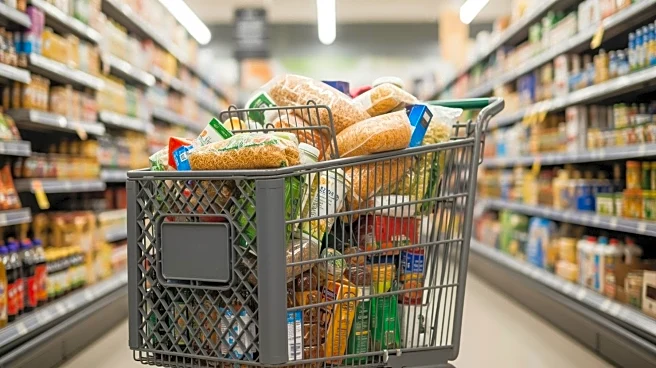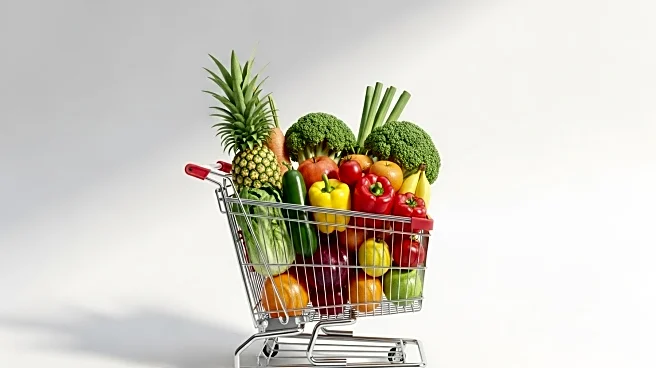What's Happening?
South Florida grocery shoppers are increasingly feeling the pressure of rising food prices, as more than half of Americans report grocery costs as a major source of stress. According to a recent poll conducted
by the Associated Press-NORC Center for Public Affairs Research, 53% of Americans identify grocery prices as a significant stressor, while 33% consider them a minor stressor. This trend reflects broader economic challenges as inflation impacts household budgets, forcing consumers to seek ways to stretch their dollars further. The rising costs are attributed to various factors, including supply chain disruptions and increased demand, which have led to higher prices for essential goods.
Why It's Important?
The rising grocery prices have significant implications for U.S. households, particularly those with fixed or lower incomes. As food costs continue to climb, families may need to adjust their spending habits, potentially cutting back on other necessities or discretionary spending. This economic strain can lead to increased financial insecurity and stress, affecting overall well-being. Additionally, the situation highlights the broader issue of inflation, which can impact consumer confidence and spending patterns, ultimately influencing economic growth. Businesses in the food industry may also face challenges as they navigate supply chain issues and attempt to balance pricing strategies with consumer demand.
What's Next?
If inflationary pressures persist, consumers may continue to seek alternative shopping strategies, such as buying in bulk, seeking discounts, or opting for generic brands. Policymakers may need to address the underlying causes of inflation to alleviate the burden on households. Additionally, businesses might explore innovative solutions to manage costs and maintain customer loyalty. The ongoing economic situation could prompt further discussions on public policy measures aimed at stabilizing prices and supporting affected communities.
Beyond the Headlines
The rising grocery prices may also have cultural implications, as they could influence dietary habits and food choices. Consumers might prioritize cost over nutritional value, potentially impacting public health. Furthermore, the situation underscores the importance of food security and the need for sustainable practices in agriculture and distribution to ensure affordability and accessibility for all.












